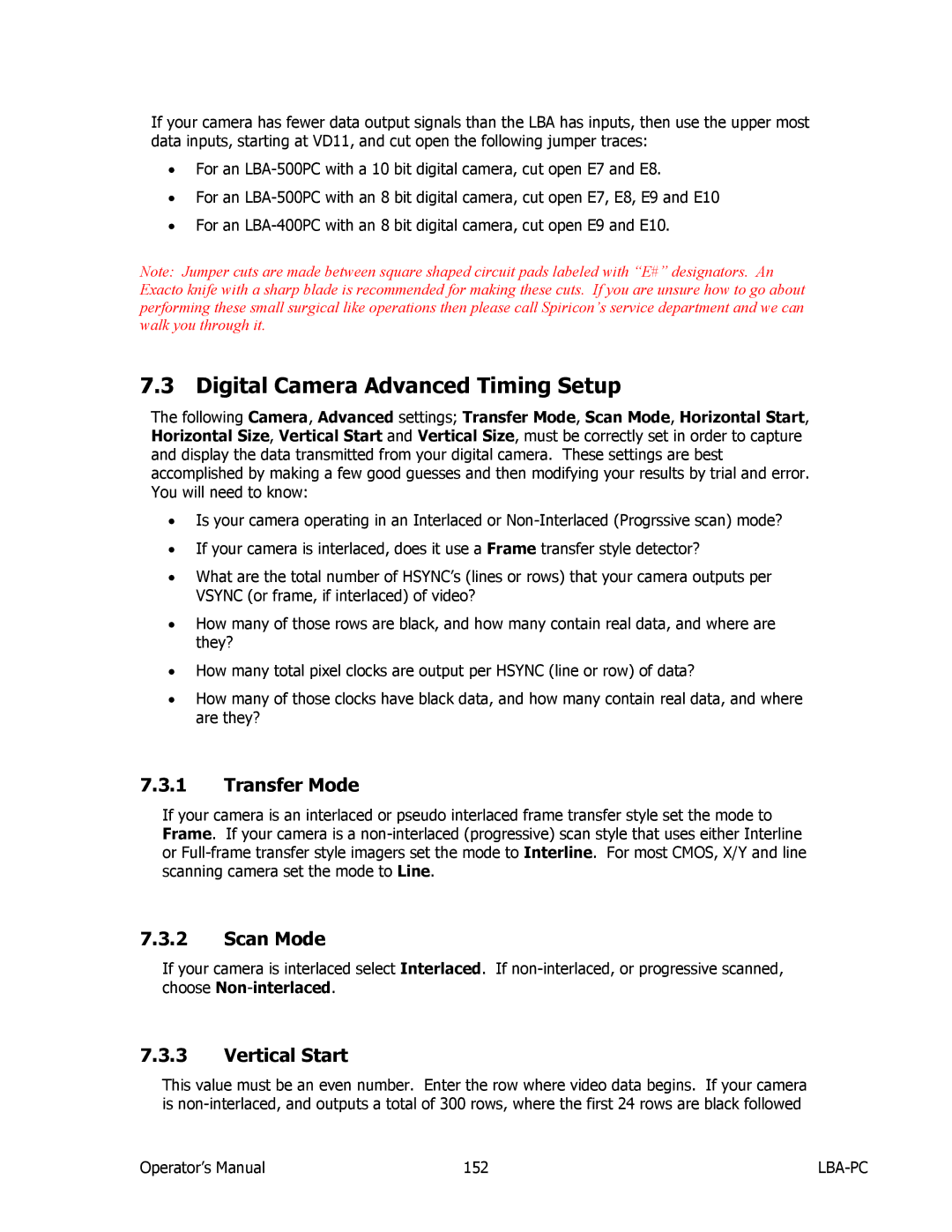If your camera has fewer data output signals than the LBA has inputs, then use the upper most data inputs, starting at VD11, and cut open the following jumper traces:
•For an
•For an
•For an
Note: Jumper cuts are made between square shaped circuit pads labeled with “E#” designators. An Exacto knife with a sharp blade is recommended for making these cuts. If you are unsure how to go about performing these small surgical like operations then please call Spiricon’s service department and we can walk you through it.
7.3 Digital Camera Advanced Timing Setup
The following Camera, Advanced settings; Transfer Mode, Scan Mode, Horizontal Start, Horizontal Size, Vertical Start and Vertical Size, must be correctly set in order to capture and display the data transmitted from your digital camera. These settings are best accomplished by making a few good guesses and then modifying your results by trial and error. You will need to know:
•Is your camera operating in an Interlaced or
•If your camera is interlaced, does it use a Frame transfer style detector?
•What are the total number of HSYNC’s (lines or rows) that your camera outputs per VSYNC (or frame, if interlaced) of video?
•How many of those rows are black, and how many contain real data, and where are they?
•How many total pixel clocks are output per HSYNC (line or row) of data?
•How many of those clocks have black data, and how many contain real data, and where are they?
7.3.1Transfer Mode
If your camera is an interlaced or pseudo interlaced frame transfer style set the mode to Frame. If your camera is a
7.3.2Scan Mode
If your camera is interlaced select Interlaced. If
7.3.3Vertical Start
This value must be an even number. Enter the row where video data begins. If your camera is
Operator’s Manual | 152 |
|
